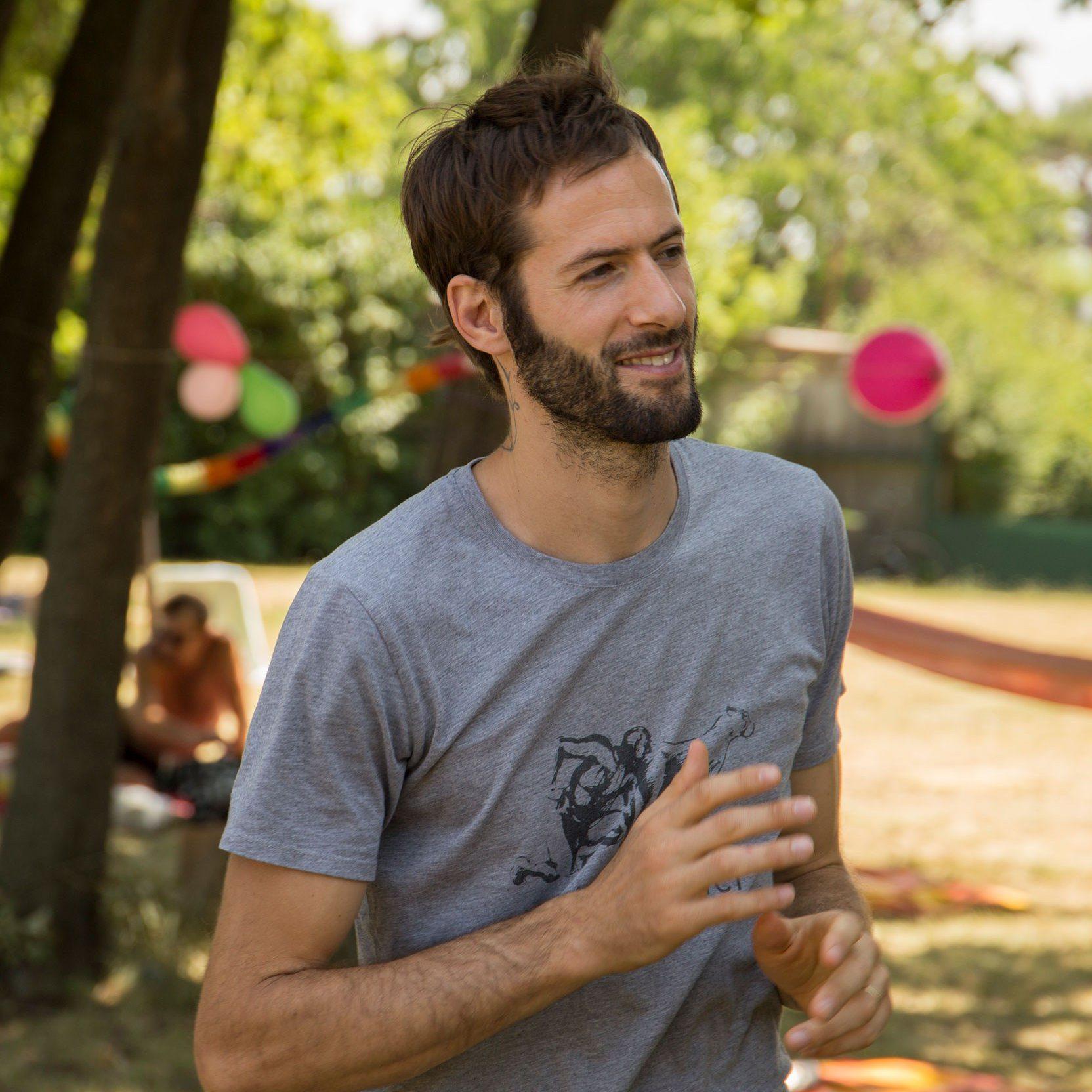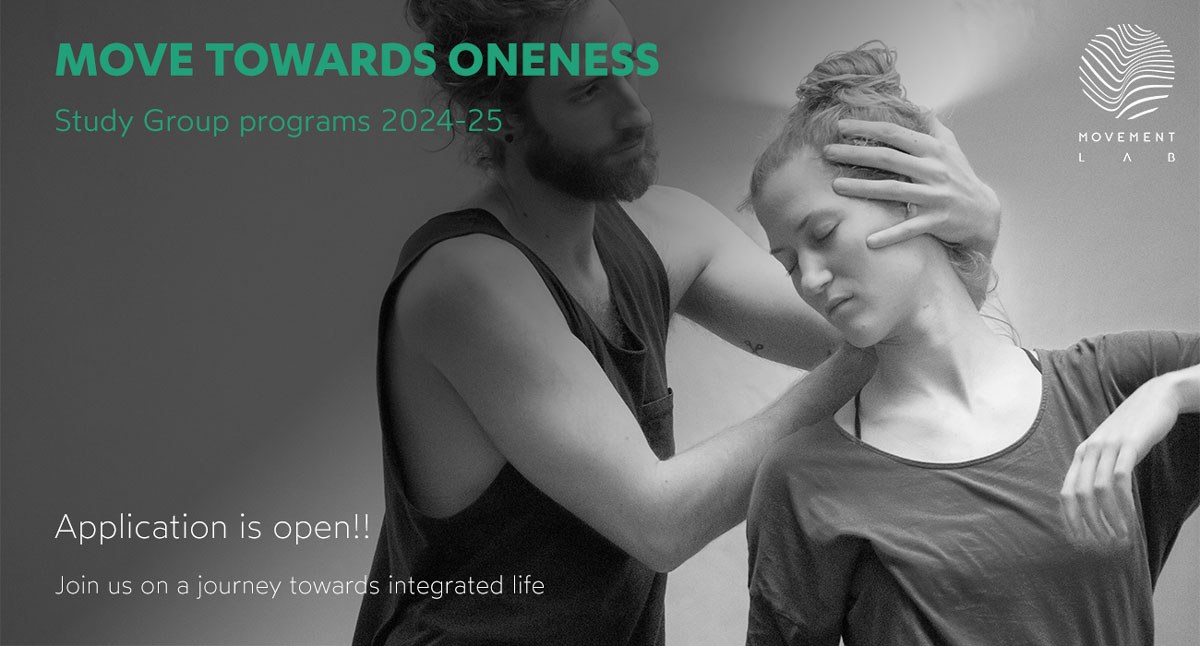The flow state
 by Matan Levkowich
by Matan LevkowichThe start
What are your thoughts in relation to the word 'flow'? What comes up in your imagination?
Being in the flow, the 'no mind' state or whatever you want to call it, has been searched for by many movement practitioners and many different disciplines. In certain disciplines, the notion of 'flow' has been unnecessarily mystified, transformed into unattainable esoteric knowledge. In others, it has been oversimplified, taken out of context, branded as an activity more than a quality.
In this article, I will take a rather difficult choice and use a pragmatic approach to the topic. I will examine how can we maintain the inherited complexity of 'flow' while maintaining it accessible to experience and explore. More specific, I will try to make the case that there is a predictable relationship between how you manifest kinetic energy to your potential to enter the flow.
A story
A couple of days ago, I had a conversation with a student of mine and he shared with me an image that helped him to conceptualise the notion of flow.
He described the movement of a river flowing down the mountain. The water, which are being affected by gravity, flows down the mountain while constantly being redirected by random obstacles. The running water have no interested in confronting the obstacles and keeps avoiding the potential resistance of the solid objects on its way down.
This example is not 100% identical to where I am aiming but it can be used as a starting point for our analysis. Let's brake it down:
The preconditions to the flow of the water are very predictable. Gravity has to be on our side, conflict with other objects is inevitable and can result in friction and kinetic loss. To preserve the motion we need to abandon resistance and that can happen when we have clear understanding of the kinetic trajectory and the potential of redirection.
Using this example, we can understand the physical principles that can help us to maintain the flow of our kinetic expressions. In simple words, don't get stuck, keep things moving.
It is a good start but still, it is far from being an accurate description of human motion.
Problems and solutions
The short story of the river has few fundamental problems - the story only reveals the external challenges that one might face when attempting to flow in motion. But what about internal inhibitions?
If you start moving your body you can very quickly notice how you are being limited by the body itself. Your joints, ligaments, muscles and connective tissue prevents you to move in certain directions.
Second, the water is 'mindless' while you are not. And how you experience the moment to moment expression is as important as what you actually doing.
The Body
Let's start with the body as it is more simple. First things first, you need to familiarise yourself with your body's limitations -
First problem - how far and in which direction can you move your bones within the joint capsule. This can be limited by several things but it doesn't matter as we want to work with what we have for the moment. The closer you get to your end range, the more resistance you will encounter. And the only why to keep going is to increase the muscle tone or alternatively, to change your relation to gravity so you could keep folding without increasing tension.
One solution to this problem would be to recognise early enough that you are reaching the end range and moving yourself away by using curves, figures of 8, waves and spirals.
Second problem - are you generating any excessive muscle tone? finding the right amount of muscle tension for any given movement is crucial as excessive tension will inhibit kinetic energy.
To overcome this problem, gravity will play a major role once more. By enhancing the force of gravity properly, you can replace concentric contractions with the less energy demanding eccentric contractions. In other words, allow your body parts to fall and accelerate towards the ground and use your muscle (eccentrically) to redirect yourself and the energy you just expressed away from a collision course with the ground.
The Mind
By now, you might ask yourself why to prioritise the preservation of kinetic energy when dealing with flow. To understand it, we have to examine our mind and more specifically, the nature of attention.
If you start observing your body's sensations, sooner or later you will notice that the nature of your attention is to 'jump' to the area where you feel the strongest sensation. You can train your mind using sitting mediation to become more aware of this pattern and to some degree even overcome it but non the less, when dealing with complicated and complex kinetic scenarios, your mind will default to that behaviour.
Therefore, if you are moving without resistance and suddenly you hit an obstacle, there is a very high probability that your attention will shift to the new & intense emerging sensations that have been born by the sudden collision and your experience of 'flow' will be no more.
The 'flow' exists only in the present and therefore, you cannot attached to it any meaning or any value. The moment you do, it is already gone and you have entered a space of reflection. And your mind can easily drift into spaces that are far away from the activity that you are doing and even if you move in a way where no kinetic disturbance takes place, you won't necessarily experience 'flow'. And as I have written earlier, the water that flows down the mountain has no mind. It is free from imagining the unknown future or reflecting on that which has already past.
So we are in a search for a very narrow entrance that is somewhere in between carful observation and complete surrender to the moment. It is like being completely drunk but at the same time, hyper aware of everything you are doing. And that is not an easy task.
The most accessible pathway I have found so far to enter this state is to engage in an activity that demand a certain amount of risk (in relation to one's ability of course) of injury/failure. And you should judge it very carefully - You don't want to be paralysed by fear as the risk of injury will grow exponentially. Nor you want to be too comfortable as then you won't need to be alert and present. And again it is a very fine line you are trying walk on.
Conclusions/Further thoughts
The utility of separating the body from the mind is only relevant for post-analysis. In action, the experience of flow is the experience of unity and not of division. The clear physical guidelines of how to negotiate kinetic energy or how to observe your mind while moving can slowly dissolve, leaving you freer to discover flow at a much wider array of experiences.
And to a certain degree, the attempt to shed light on the flow state by taking a pragmatic approach was born to fail. We can definitely point out some objective observations on the nature of our mind and on how kinetic energy can be manifested, but on the level of experience we are entering an introspective space where you are the only real judge of your own experience. And from that standpoint we might even be able to argue that the white belt mover might experience a more 'intoxicating' sense of flow than the more seasoned mover.
So don't get stuck with words, ideas, concepts and explanations. These are only attempts to describe something that can only be understood by direct experience. Simply, engage in movement and trust that when you stop searching for it, you will be there.
Join our community online!
Did you enjoy this article? Don't miss the next one!
Subscribe to our newsletter and we'll deliver the next article directly to your inbox.
If you wish, we'll include you when announcing special events and online courses.
